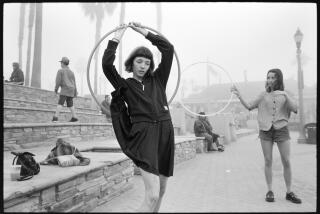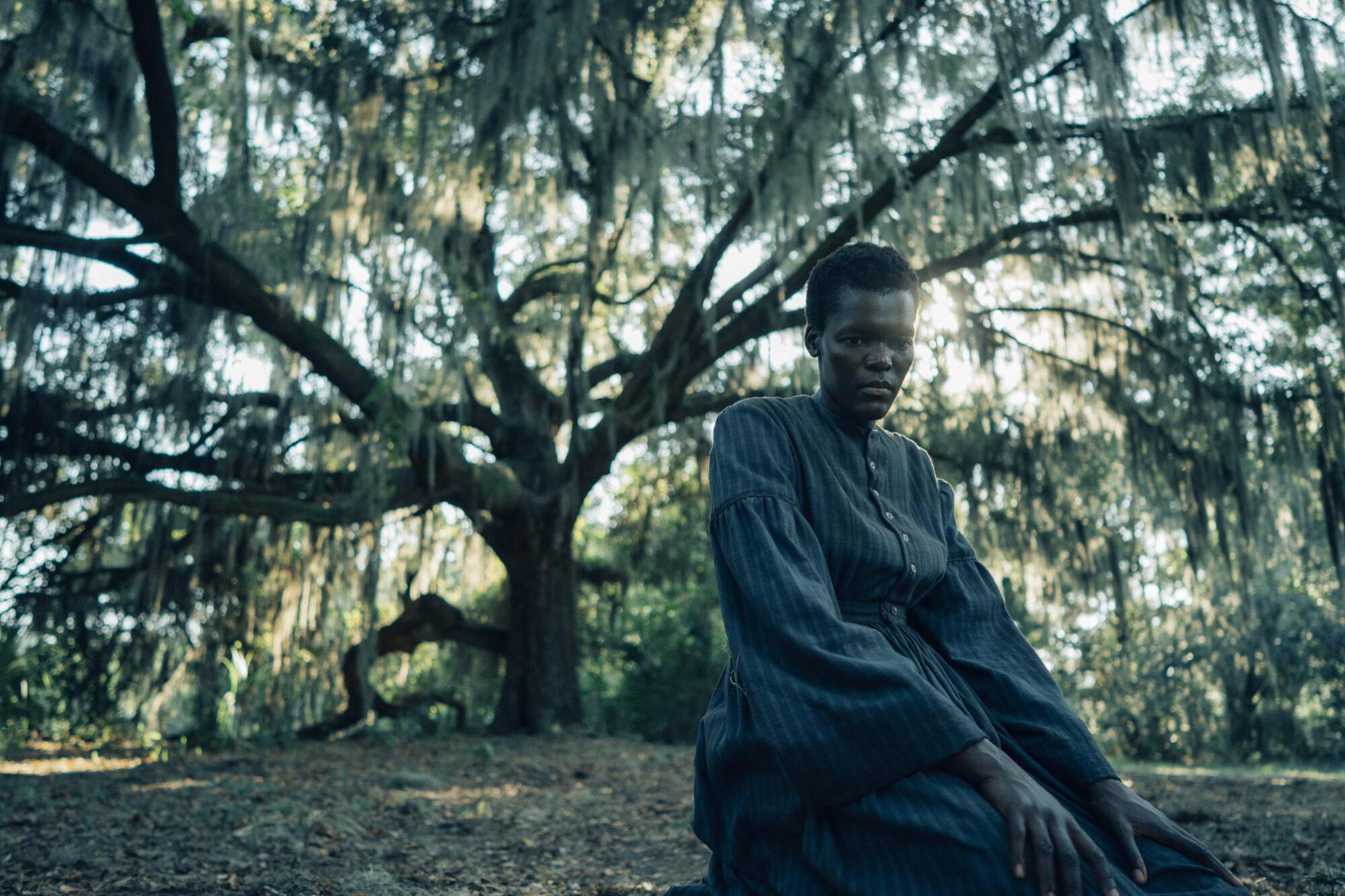
âThe Underground Railroadâ cinematographer James Laxton met director Barry Jenkins at Florida State University more than two decades ago, and theyâve been making movies together ever since. âDuring those early days in Florida, we learned how to expose film for the first time, how to move a camera, how to light a scene,â Laxton recalls. âBeing film students together became the foundation for our working relationship, and trust runs like a current through it.â
That relationship has remained constant even as Jenkinsâ projects have scaled up exponentially in scope. Jenkins and Laxton shot 2016âs Oscar-winning âMoonlightâ in 25 days for $1.5 million. Though its budget has not been disclosed, Amazonâs âThe Underground Railroadâ required 116 shooting days and surely came with a blockbuster-sized price tag.
Despite the enhanced scale of the limited series, Laxton took pains to zero in on the intimate essence of runaway slave Cora (Thuso Mbedu) within the epic dimensions of a 10-part period piece. âOn every film, we make our visual decisions based off of our main characterâs experience,â Laxton says via Zoom from his L.A. home. âIn âRailroad,â we were very conscientious about capturing Coraâs journey through the cinematography.â
âUnderground Railroadâsâ logistical heft translated into more cameras, bigger crews and story-boarded action sequences captured on large-format Alexa LF cameras outfitted with specially customized Panavision lenses. Laxton, Oscar-nominated for his âMoonlightâ cinematography and now an Emmy nominee, tried to take it all in stride.
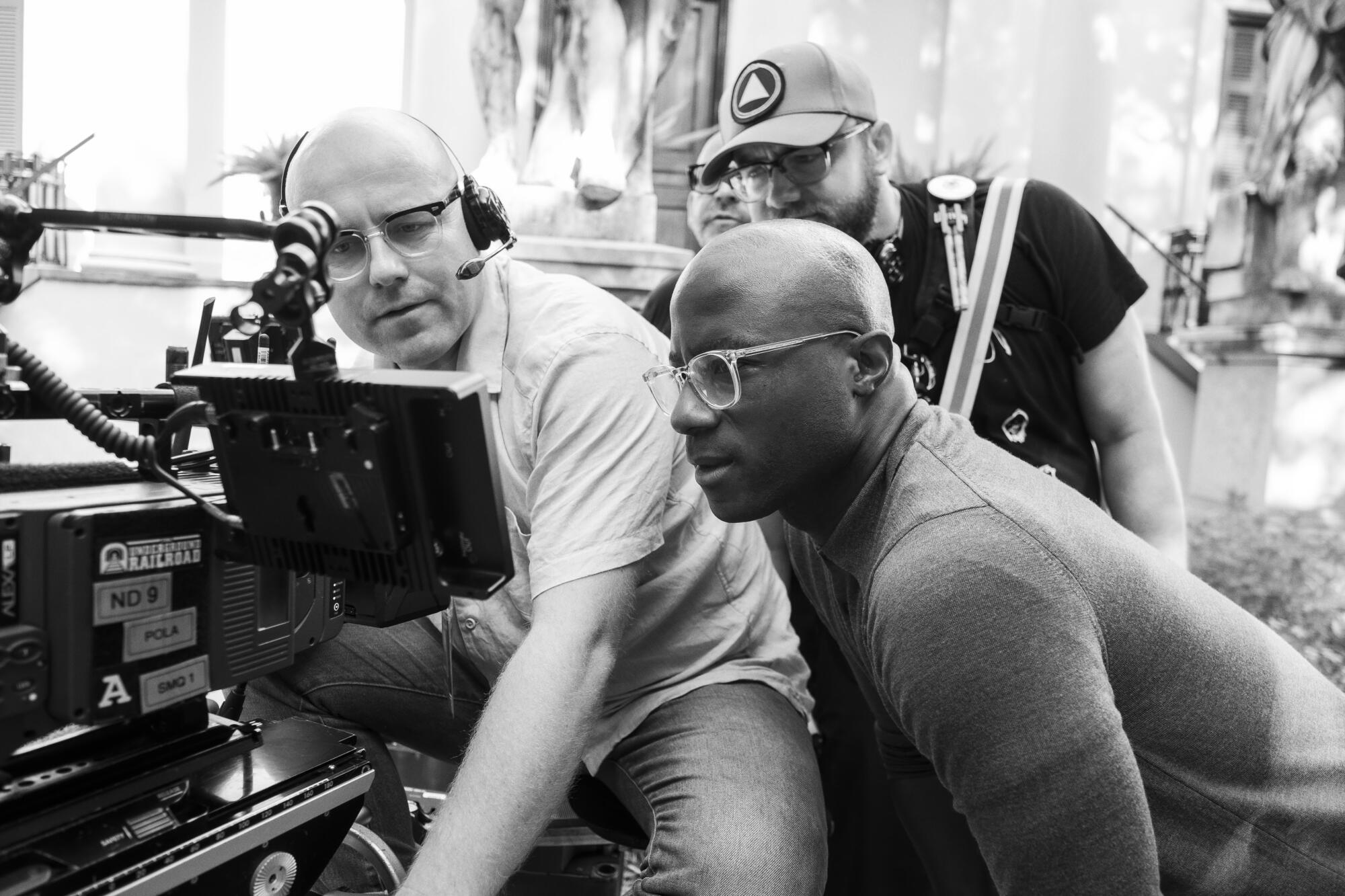
âI was, I wouldnât say nervous, but really on my toes about making decisions that would not just be [about] the technical crafts,â Laxton says. âWhen 25 trucks roll onto the set and you need to make sure theyâre all in the right place and you start delegating different things, you can get outside of your comfort zone quite quickly. Even though we took a big step into this new realm of technical challenges, we were able to hold onto our artful sensibility.â
One of the seriesâ most technically elaborate sequences shows Cora and her tormenter Ridgeway (Joel Edgerton) plummeting in slow motion into the black depths of the Underground Railroad. Laxton and his team shot the stunt on high-speed Phantom cameras at 1,000 frames per second against a blue screen backdrop built on a Savannah sound stage.
âIt was important for Barry and me that we didnât just hang the actors on wires and let them flail their arms about and blow wind machines at them,â says Laxton. âThey were really dropping, in harnesses, something like 40 feet through this huge tube of blue. We set up cameras at all these different angles, looking up, looking down â big credit to the crew for figuring out the rig because that scene bookends the show and hopefully itâs one of our most powerful images.â
Also striking: the shocking shift in color palette, developed in post-production with colorist Alex Bickel, that occurs in âTennessee - Exodus.â The episode abruptly opens with Cora, in shackles, trudging through ash-dusted rubble. âIt looks like Coraâs taking a journey through hell on earth because the entire state of Tennessee is on fire,â Laxton explains. âWe stripped out most of the color to create this stark, high-contrast look where everythingâs tarnished in soot mixed in with very saturated red fire. And thereâs no blue sky the entire episode. The earth looks crackly and dark, which for us is how Cora must have been feeling.â
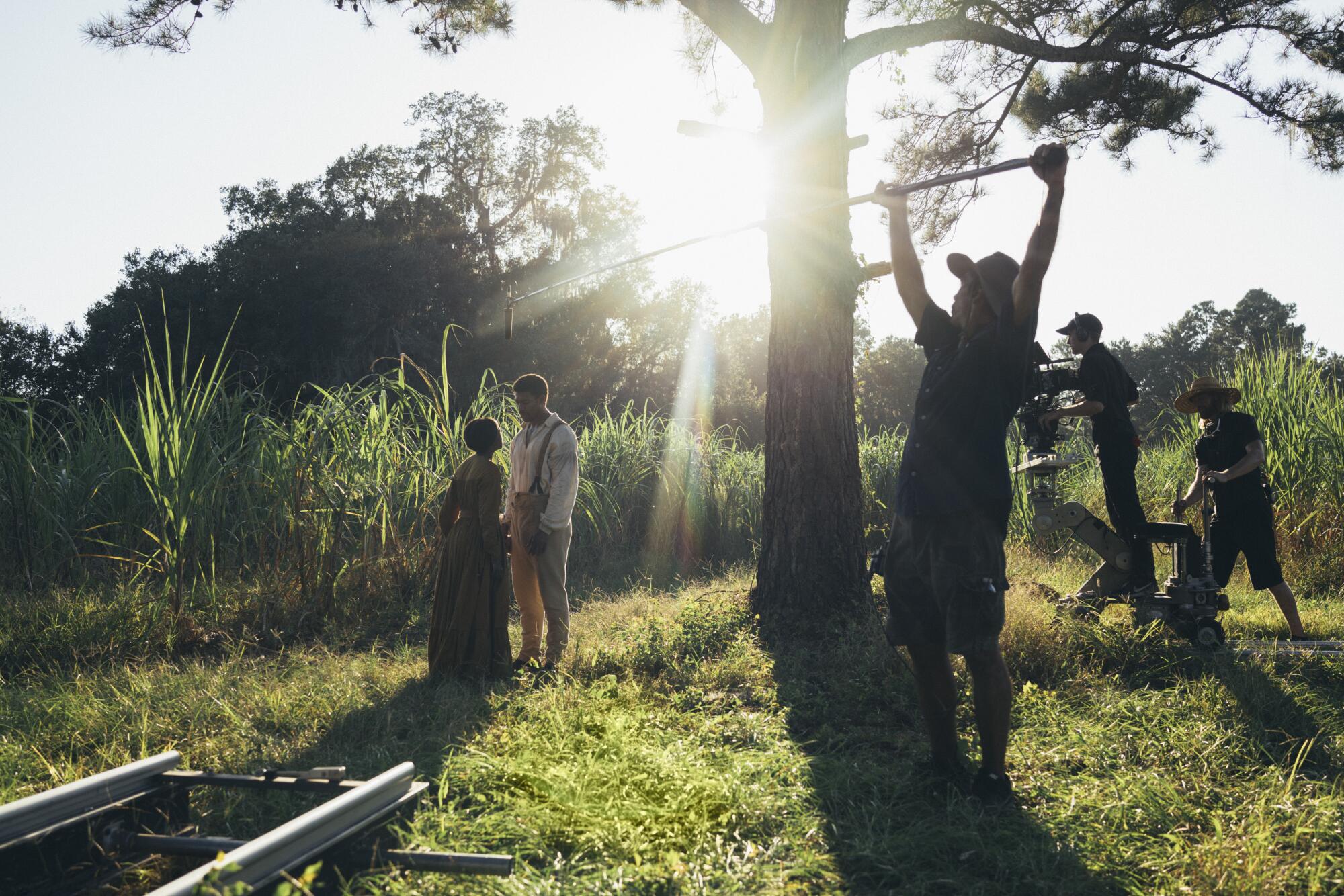
Laxton and Jenkins devised detailed shot lists for âUnderground Railroad,â filmed entirely in the state of Georgia, during preproduction but soon abandoned most of their premeditated camera moves. âIâd be on set watching Thuso rehearse and seeing how she moved through the space carrying such a wide spectrum of feelings,â Laxton says. âWe realized that almost every decision about the cameras hinged on her performance, dictating how tight or how wide the shot needed to be.â
While Mbedu and her costars occupy the foreground in âUnderground Railroad,â Laxton often frames Georgiaâs natural landscape as if it were a mood-setting proscenium peppered with spectacular sunsets, claustrophobic swamps and sun-dappled meadows. Laxton says, âBarry and I are always inspired by our locations. For this show, the landscapes can be quite glorious in the South. Even though weâre depicting some very traumatic experiences, we didnât want to shy away from the beauty. When you witness trauma in a beautiful environment, it can almost be more heartbreaking.â
Laxton and Jenkins also tapped into a fondness for formal compositions sparked by their long-standing love of still photography and portraiture. For âUnderground Railroad,â they drew inspiration from Chicago painter Kerry James Marshall, whose brooding portraits of Black subjects vibrate with intensity. In keeping with that aesthetic, the show periodically presents group portraits of slaves looking somberly straight into a barely moving camera.
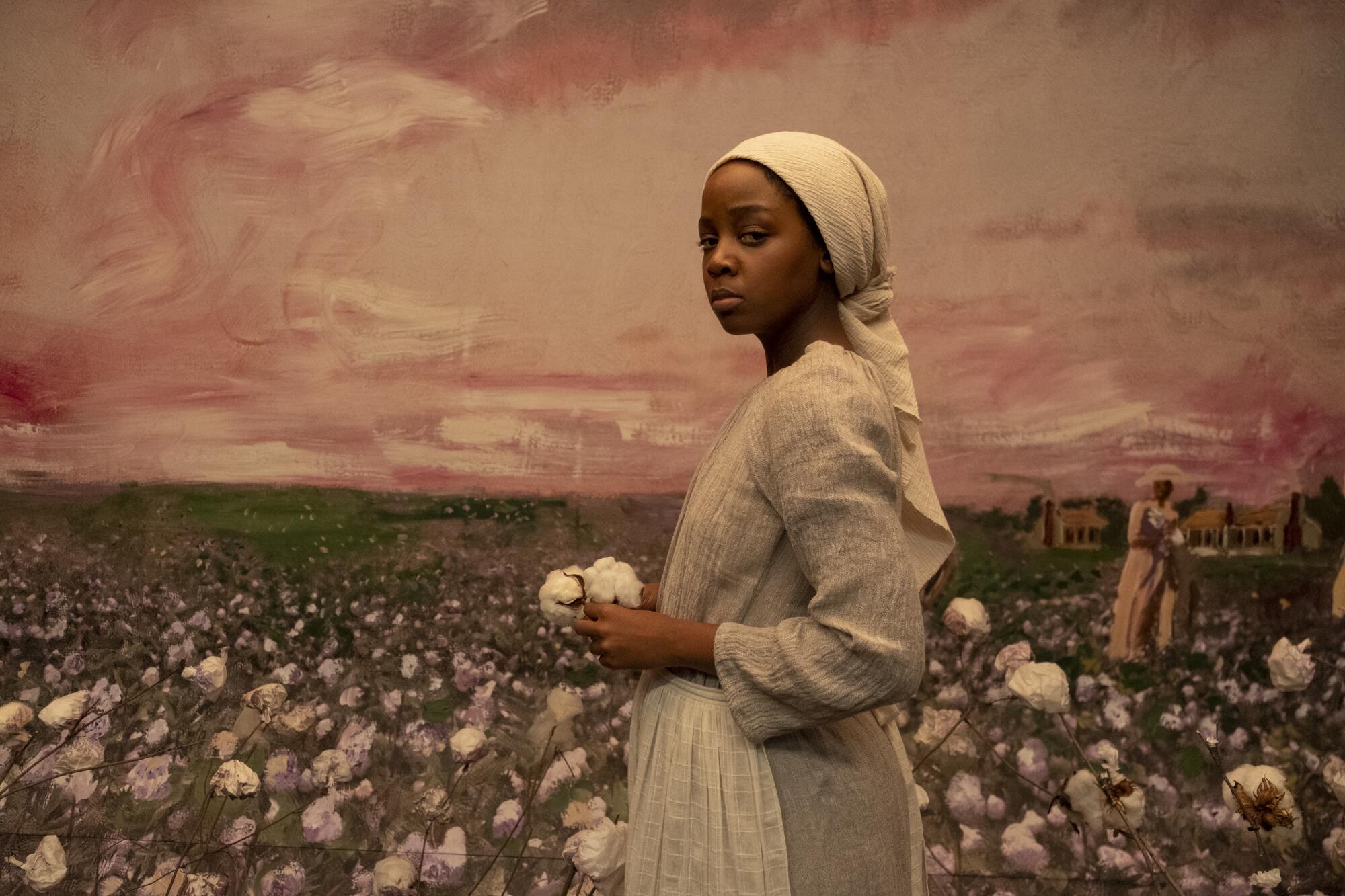
âFor Barry and me, the presentation of a portrait winds its way into our vernacular very effortlessly,â Laxton says. âI mean, what is a closeup but a portrait of the actor? Thereâs something intimate about having a character look directly into the lens like theyâre staring back at the audience and breaking down this barrier between motion picture and real life.â
Laxtonâs most daunting task arose directly from the âUnderground Railroadâ premise itself. He had to illuminate characters running through a forest in the dead of night or hiding in pitch-black subterranean tunnels without calling attention to the artifice of 21st century lighting.
âThe most scary part of the entire process for me was that so much of this show happens in the absence of light,â Lawton says. âI didnât want to create big backlights because I felt like we needed to ground the story, so whenever there was a candle on set, or a lit torch, or the trainâs headlight, we made sure it interacted with our lenses and cast a glow on the characterâs faces. It took a lot of hard work but Iâm very happy with this sort of cinematographerâs lie, where youâre putting lights where they shouldnât be. Cheating. Magic. Whatever you want to call it.â
More to Read
From the Oscars to the Emmys.
Get the Envelope newsletter for exclusive awards season coverage, behind-the-scenes stories from the Envelope podcast and columnist Glenn Whippâs must-read analysis.
You may occasionally receive promotional content from the Los Angeles Times.


